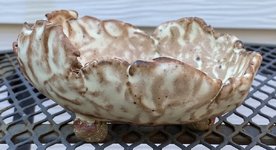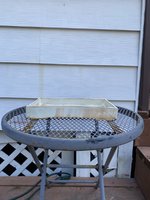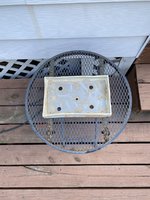Glaze ingredients don’t melt until the last 100 C of the firing, and only really sinter together before that point. The CMW lectures had a series of photos from an electron microscope inside a kiln during a firing and showed the same individual kaolinite throughout it. Super cool!
This does sound AWESOME! I'm super jealous that you got to be a part of that!!

But that "last 100 C" of firing"-rule... AGAIN... this is ASSUMING a particular "heat/cone"... and ASSUMING a particular firing schedule vs. Range of fully-fired body.
We must remember that low and mid-fire exist. While not forgetting that most clay bodies, themselves have "ranges"... with their vitreous point set "betwixt" those parameters.
When one is mixing their own glazes... sans recipes (besides your own notes)... it's ALL.. kind of "relative" to the scenario. Will vary upon heat goals, aesthetic goals, functional goals ect.
It's useful to point out, here.... MANY of the glossy glazes that I BUILD, that get fired to cones 6-8... are built upon a clear cone 04-05 glaze. One just needs to know how to balance the construct of the glaze. (The reason I point this out, is because this would mean that these glazes, even stabilized with shamanic alchemy (

) melt down much sooner than standard Cone6-8 glazes.)
My kiln fires to a different cone on each shelf.. I TRY to stack accordingly.. but sometimes a clay body geared for 5/6... ends up in a 7... so this, one more time, would skew "rules" and standards.

I hope this is not coming off aggressive, (the things you are saying ARE correct in the capacities you are speaking of) I am just REALLY liking this conversation!
Salt/other vapor glazing, Raku (hotspot), and dung-pile glazing are few more "fringe thoughts" that challenge "guidelines".

Apparently the biggest difference is a different color behind the glaze, which is relatively transparent












